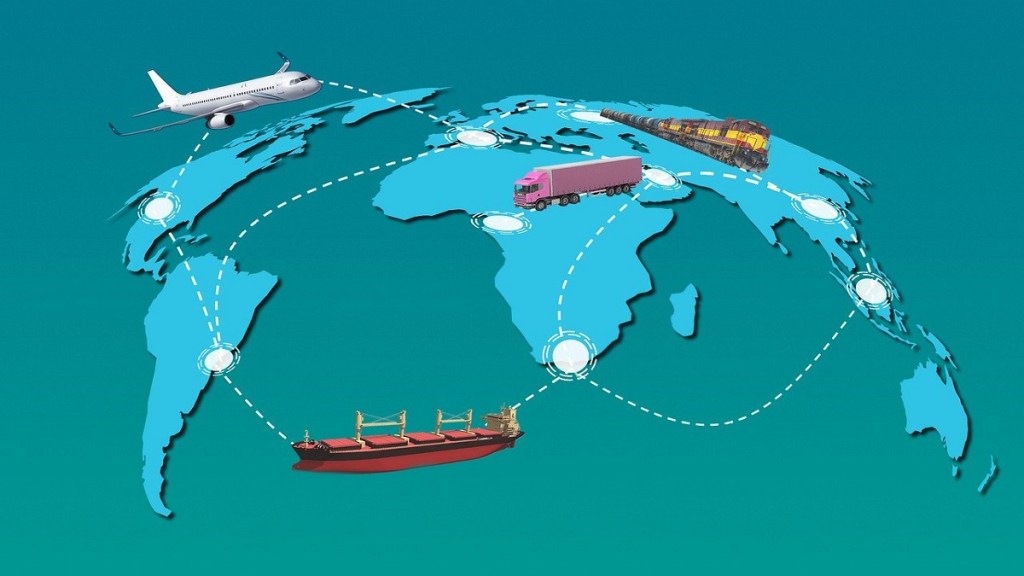By Arvind Rangarajan TCA
Logistics for MSMEs: After the incident of the Ever Given constipating the Suez Canal, it’s apparent that the global supply chain is more of a ‘thread’. “For want of a nail, a Kingdom was lost,”… “a chain as strong as its weakest link,” and “a sword of Damocles which hangs by a thread” are some of the adages that have gained new life. Globalisation and the theories of competitive advantage have shifted entire industries globally. China and the Asian economies have become the factory of the world. It procures from all across the globe and supplies everyone in return.
As mega-corporations seek to optimise every penny of costs, outsourcing to faraway locations in search of cheap labour and raw materials has stretched the supply chains. The covid-19 pandemic, the Russia-Ukraine war, and related sanctions suddenly brought sunlight into the vast network of interlinked supply chains underbelly. Food shortages, oil price spikes, the vanishing supply of semiconductor chips, and many other ills now confront manufacturers. How have these events and outcomes shaped the fate of small companies? What can they do to mitigate the risks?
The Return of Localisation
The big theme of our times is to seek local alternatives to global suppliers. The larger move towards re-establishing the old outsourced industries is still in its early days, but local sourcing has gained immense traction. Location then has become a key decision point. Is it better to be near the point of sale, or is it better to be near the source? Governments have been answering this conundrum with industry hubs that share utilities, address connectivity and internationalisation of the domestic currency.
One response from the Indian government has been the internationalisation of the rupee for cross-border transactions and investments. Emphasising cross-border payments in rupees reduces dependencies on USD. Transaction settlement in USD is risky despite willing buyers and sellers, as the New York Exchange has the power to block access to clearing houses.
Online Aggregators
The digitalisation of the economy has created a new class of enterprises that add value only by providing information. Information on who sells what, in what area, and on what terms, the local storage and procurement facilities, and access to this data come at a price.
Usually, a small supplier finds the price for getting information is to share his data. This is a double-edged sword. Sharing information about clients gives access to new ones. Still, suddenly the old faithful are vulnerable to being poached! More than ever, having some unique selling proposition is a determining factor in preserving the clientele.
Adapting to Digital Economy
Covid forced people to go digital. Suddenly, Zoom, Google Meet, and a dozen apps facilitating video calls were as essential as a pair of wheels. The shift into the digital economy with online ordering, procurement through reverse auctions, and remote working have been dramatic. Everything from restaurants to trucks and dam-building has had to be re-engineered to work in a digital framework. We now have central kitchens supplying hundreds of different brands and forms, and trucks being driven in shifts and rerouted in real-time in line with traffic conditions. The immensity of the shift has spawned dozens of new industries – like doorstep delivery, ride-hailing, and AI-based voice recognition to manage client service.
But Indians had a foretaste of the demonetization and switching to GST a few years back, and this crisis found that at least receiving and making payments was less of a challenge in India. The current global business scenario has resulted in companies opting for supply chain finance (SCF) solutions. With digitization, companies overcome the time deficit caused by repetitive financing processes in search of competitive interest rates from various lenders. This is where the digital SCF ecosystem bridges the gap between buyers, suppliers, and lenders by delivering easy access to working capital requirements.
Need for a Supply Chain Financier
Money greases the wheels of commerce. Like everything else, financing also has moved online. Whole new currencies have come into being, but the basic bread-and-butter tenets remain the same. Businesses need funds to bridge the time from purchase to sale. In its digital avatar, and with access to sales and payment data, lending decisions and delivery of funds can be fast through a digital SCF ecosystem. Industries can leverage an accommodative regulatory framework to overcome uncertain global factors and other supply chain disruptions.
Also read: MSME retailers are stocking up 40 per cent more than usual for festive sales: Survey
Picking a financial partner is no longer about size, although reputation remains important. A knowledgeable and tech-friendly guide can be a key differentiator. The forgotten art of factoring and providing receivable finance and collections can help manage working capital without loading up the balance sheet. Bank debt can then be used for more difficult term financing during accelerated sales realizations.
Arvind Rangarajan TCA is the Co-Founder of Artfine. Views expressed are the author’s own.

